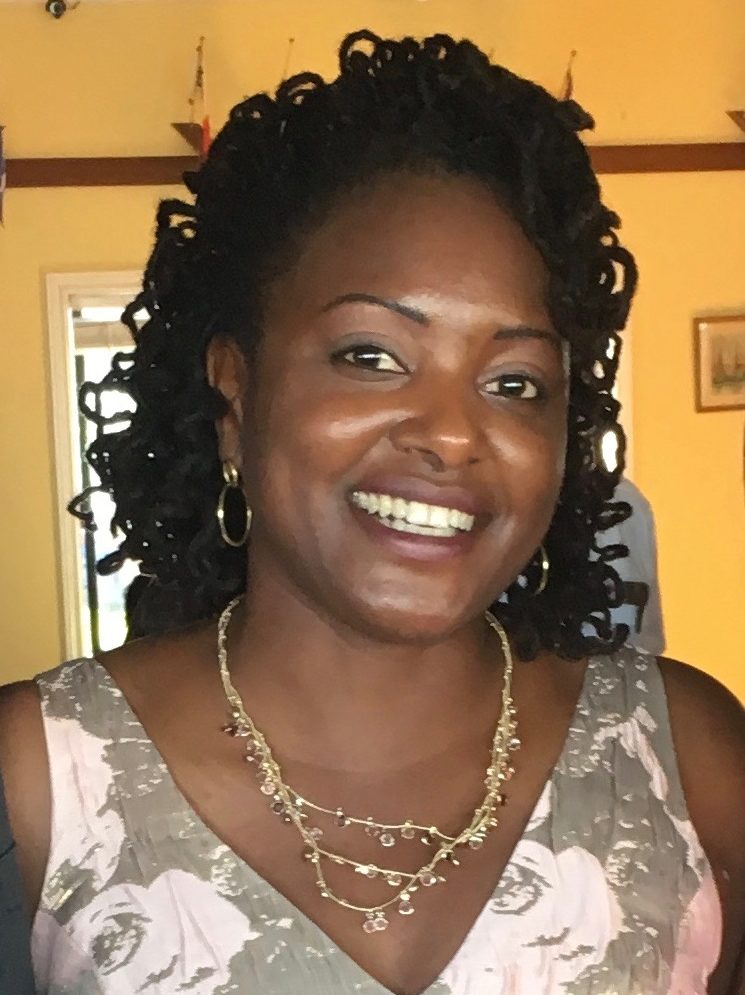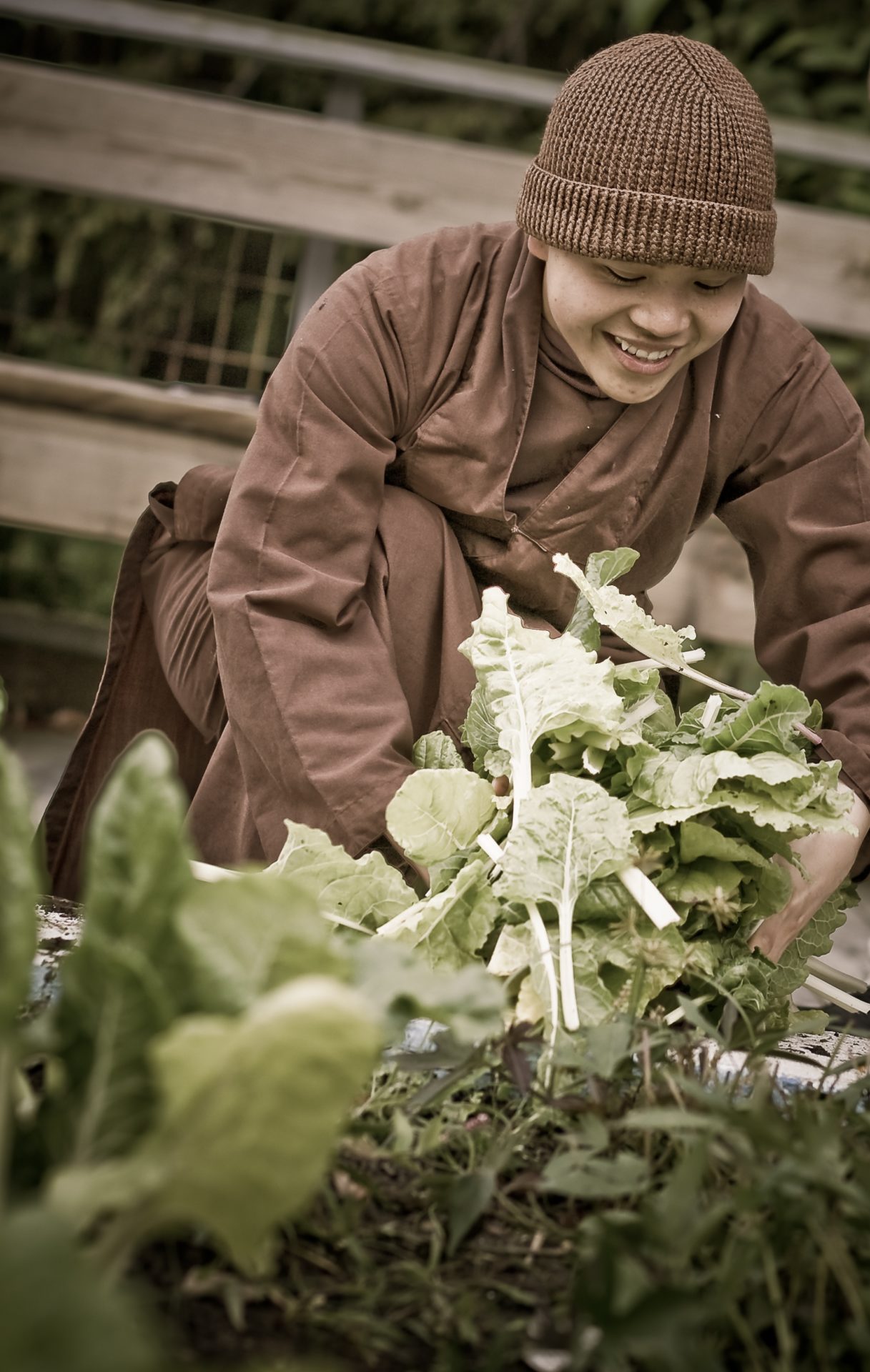By Edissa Nicolás-Huntsman
For most of us, buying groceries can be a very stimulating experience. Going to the store to pick up bread can lead to a purchase beyond our means, in more ways than one. Once inside, there are colorful foods and bright packages to contend with. Displays entice us into impulse shopping. The message on magazine covers, on market signage, and from other customers is:
Buy more.
The pervasive,
By Edissa Nicolás-Huntsman
For most of us, buying groceries can be a very stimulating experience. Going to the store to pick up bread can lead to a purchase beyond our means, in more ways than one. Once inside, there are colorful foods and bright packages to contend with. Displays entice us into impulse shopping. The message on magazine covers, on market signage, and from other customers is:
Buy more.
The pervasive, continuous, and seductive message in advertisements is:
The more we consume, the happier we will be.
Only mindfulness can help to slow down these urges, reminding us of our deeper aspirations, directing us toward simplicity.
I grew up thinking about food waste as something utterly unacceptable. My mother’s experience as an orphan in the Dominican Republic meant she didn’t eat regularly or enough to satisfy her needs. She wanted to make sure her children didn’t experience those hardships. We often thought about how some people might not have a meal. Saying grace at the table involved gratitude and remembering those less fortunate than us. I was taught to share and feed others. We often prepared food for members of our congregation at church and in our home. Even now, though I did not experience childhood hunger, I understand that many people in the world do not have enough to eat. When I eat at a restaurant, I never throw away leftovers. I offer them to folks in need, or we finish the meal at home. I allow my awareness of hunger to guide me when I eat, prepare food, and shop. I even permit this knowledge to guide my gardening and harvesting.
The garden cultivates patience in the gardener, teaching deliberateness and observation. There is nothing quite so magical as growing food in your own garden. In the garden, I never take more than I need, more than is ready. One discovers new worlds, tending to blooms and observing the creatures that thrive there. The birds happily peck among the bushes, alighting on any ripe berries we’ve neglected. When the season of harvest begins, there is always more than any one person can consume, even after the cabbage moths, gophers, and caterpillars have eaten. This leads to sharing and an awareness of the unlimited bounty around us. I am moved toward a sublime generosity: I package surplus lemons and rosemary in recycled bags and pass ripe tomatoes over the fence to a neighbor. I invite children to pick blueberries and strawberries and taste the hot sweetness of summer in all its glory. In the fall, blackberries not eaten by raccoons are gathered by friends for jamming and baking.
Arriving at the store, this awareness ebbs. A metamorphosis of sorts takes hold. It starts with the greedy way the carts are jammed against a wall, where people scramble and compete for the next one. This is a chance to breathe and smile, an opportunity to share with another person by giving them a cart. I try to remember. Inside the supermarket, I want everything I see. I, like many, am transformed by the anonymity of my purchasing power. Everything is ready to eat. Affluence is measured by the size of the bags and the price on the bill. We take more space than we need, more food than we can eat. I’ve done this a few times until I find the practice indefensible.
Why should cucumbers rot in the produce pan? A forgotten orange turns powder green and leaks. Is this bag of soft carrots my doing? I am finally sick with throwing away brown cabbage heads and grey broccoli. I learn to buy less, to carry a list. These are not the lessons I was taught as child—
Pack the freezer waste high.
Stock the fridge to bursting.
Meat at every meal.
Several courses of carbs.
At times, the price and quality of an item inspire a recipe too big for our small household. That’s when we invite dinner guests and pack a plate or two for the homeless community who live just down the way from us. Other times, I put an item back on the store shelf, remembering we are only two. This new way of eating begins with a thoughtful way of shopping. I have become more mindful. I hold the food in my hand and ask,
Do I really need this?
When will I eat this?
It’s true, too, that this way of preparing food requires more time, more patience and care. But, these are all good things. I can use more of each. There is less waste; good food doesn’t spoil. The compost bin has only meager scraps: the nub of a romaine, the thick skins of broccoli hearts, a small stone from a bag of dried black beans. This is the compost that I love. It signifies that I have eaten well. It indicates that I have been mindful this day.
This new mindfulness means the refrigerator is nearly bare. Numerous storage compartments are empty. A lone shelf contains a tub of salad greens, a half pepper, some homemade hummus in a glass container. We can see the color of the shelves and the wayback of the bottom rack where an old container of takeout sauce absconded. There’s almond butter and a jar of four-fruit jam and dried pasta in the cupboard. There is also a new feeling of believing there is enough when the shelves appear stark. These are not austerity measures. We are redefining how we measure wealth and health.
Mindfulness inspires our behavior. Life force, vibrant color, and organic growing practices factor into our choices. We are moving away from quantity for its own sake into quality as a critical resource. We plan our meals, considering their impact on life on Earth and our ability to use our purchases. I wonder if this is how it was before humans learned to store, can, and process food. I wonder whether I can relinquish the survival fears that plague us, driving us to hoard food and buy more than we need. I wonder,
Can I live in this moment?
In the kitchen we unpack provisions from our reusable cloth bags. We pile the avocados into a bowl alongside an apple and some limes. My husband arranges the heirloom tomatoes on the counter in a rainbow line from largest to smallest. We can smell their perfume from several feet away. The bread rests on the cutting board, and the baby greens and purple cabbage go into the crisper. When I am careful, when I am mindful, this is what we bring home from the market or harvest from our majestic garden. I savor each part of this process until we prepare the evening meal together.
I want this to be my life.
For now, the nearly empty compost bin contains an orange rind or two and some radish tops. It smells earthy. At this rate, it will take all week to fill it, the same as the trash. I think:
I can live this way.
I recognize it as a reprogramming, an offering up of alternatives, an array of methods from which to choose—a more mindful way to live. Over dinner, we give thanks, smiling. I look at my husband as his eyes dance over the olive toast, the garlicky hummus and the fresh heirloom tomato and avocado salad. I say:
I love this moment, my dear.
Thank you.

Edissa Nicolás-Huntsman, Healing Mountain of the Heart, holds a BA from Brown University, and an MFA from Mills College. She manages KarmaCompass.me, a lifestyle blog about wellness and culture. Edissa is a Reiki Master III and founder of Living Artist Project, a non-competitive international artist collaboration.

